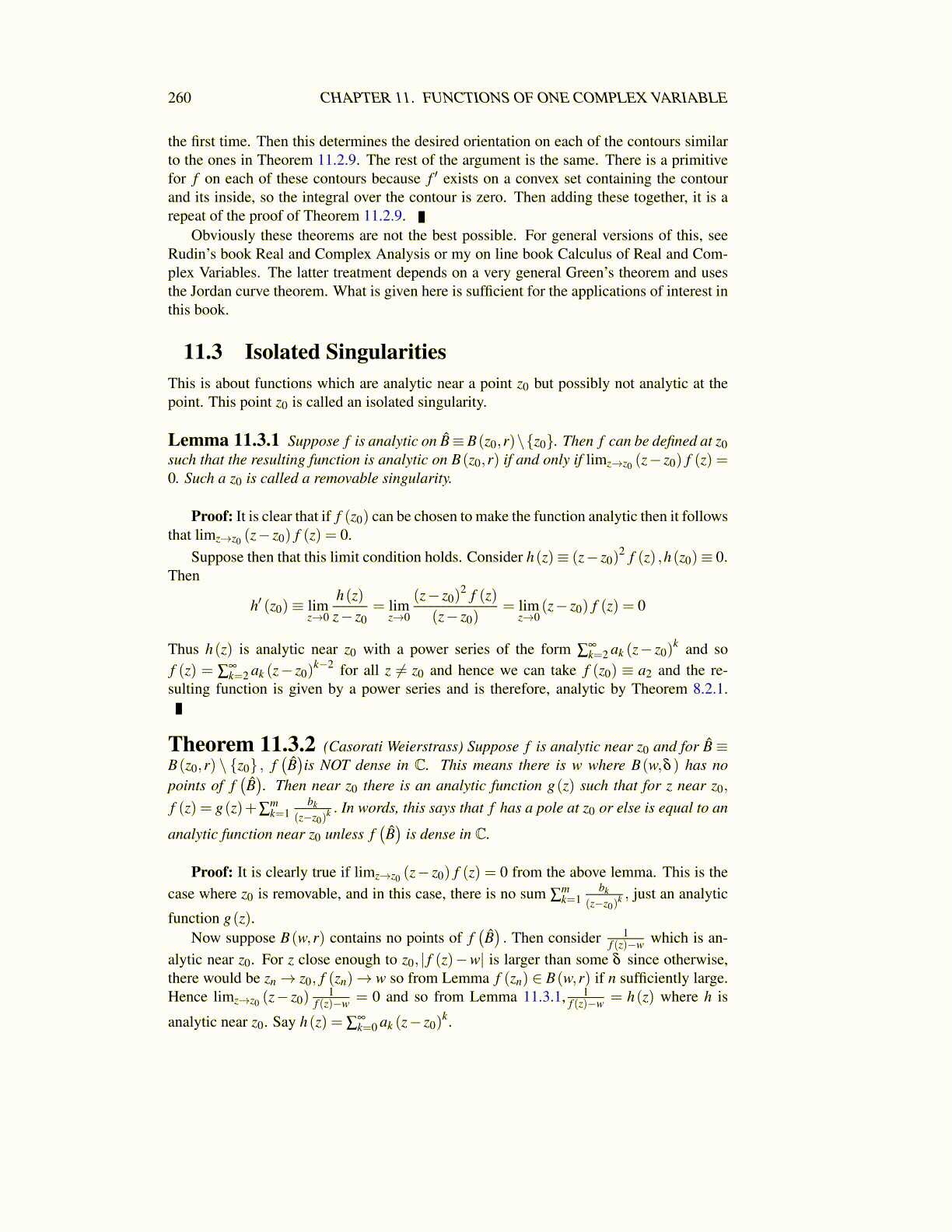
260 CHAPTER 11. FUNCTIONS OF ONE COMPLEX VARIABLE
one possible solution for Im(logz) in any open interval of length 2π because if you havetwo different k in 11.5, the two values of Im(logz) would differ by at least 2π so they couldnot both be in an open interval of length 2π .
What is done is to consider ez where if z = |z|eiθ , then θ ∈ (a−π,a+π) for some a.In other words, you consider the ray coming from 0 in the complex plane and including 0which has angle a. Then regard ez as being defined for all of C other than this ray.
a
This involves restricting the domain of the function to an open set so that it has aninverse. It is like what was done for arctan and other trig. functions, except here we arecareful to have the domain be an open set. Then if this restriction is made, there is exactlyone solution Im(logz) to 11.4. The most common assignment of a is π, so we leave out thenegative real axis. However, one could leave out any other ray. If the usual one is left out,this shows that we need to have log(z) = ln(|z|)+ iarg(z) where arg(z) is the angle of zwhich is in (−π,π). It is called the principal branch of the logarithm when this is done. Ifyou left out some other ray, then arg(z) would refer to an angle in some other open intervalof length 2π .
Now the above geometric description shows that z→ log(z) is continuous. Indeed, ifzn→ z, then by the triangle inequality,
||zn|− |z|| ≤ |zn− z|
and so by continuity of ln, you get ln(|zn|)→ ln(|z|). As to convergence of arg(zn) toarg(z) , just note that saying one is close to another is the same as saying that arg(zn) is inany open set determined by two rays emanating from 0 which include z. This happens ifzn→ z. Is z→ log(z) differentiable? First recall that (ez)′ = ez and so
h = elog(z+h)− elog(z) = elog(z) (log(z+h)− log(z))+o(log(z+h)− log(z)) (11.6)
hz= log(z+h)− log(z)+o(log(z+h)− log(z)) (11.7)
By continuity, if h is small enough,
|o(log(z+h)− log(z))|< 12|log(z+h)− log(z)|
Hence∣∣ h
z
∣∣≥ 12 |log(z+h)− log(z)|. This shows that |log(z+h)−log(z)|
|h| ≤ 2|z| . Now
|o(|log(z+h)− log(z)|)||h|
=o(|log(z+h)− log(z)|)|log(z+h)− log(z)|
|log(z+h)− log(z)||h|
and the second term on the right is bounded while the first converges to 0 as h→ 0. There-fore, o(log(z+h)− log(z)) = o(h) and so it follows from 11.7,
log(z+h)− log(z) =(
1z
)h+o(h)
which shows that, just as in the real variable case log′ (z) = 1z .